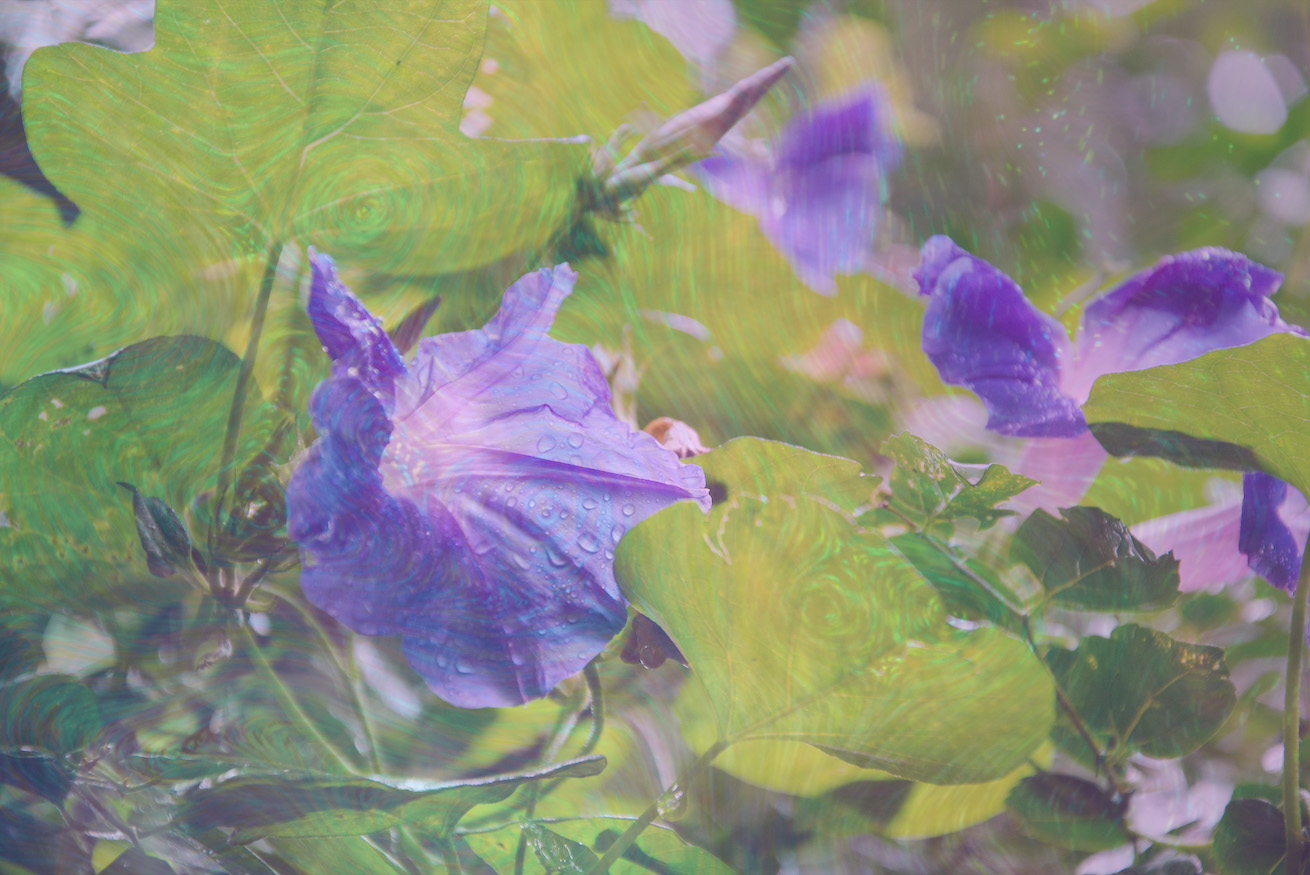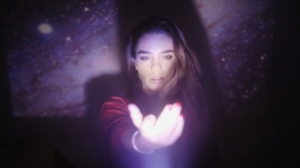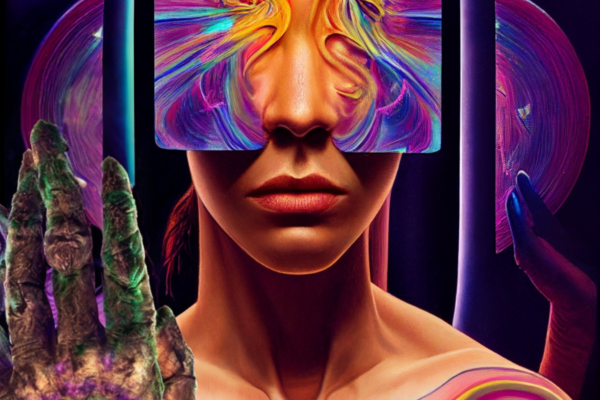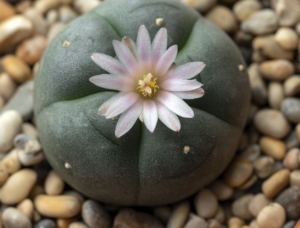
LSA, also known to Indigenous people in Mexico as ololiuqui, is most commonly sourced from the seeds of bright blue and purple trumpet-shaped morning glory flowers. It can also be found in Hawaiian baby woodrose or elephant creeper, a perennial climbing vine native to the Indian subcontinent.
The psychoactive properties of ololiuqui stem from its alkaloid makeup. Examples of other plant-based alkaloids include the holy trinity: caffeine, nicotine, and cocaine. Because LSA can have a sedative effect, some sources classify it as a depressant, in addition to a psychedelic.
If all that sounds similar to LSD, that’s because it is. D-lysergic acid amide (LSA) and D-lysergic acid diethylamide (LSD) are chemical cousins and produce similar effects. However, unlike LSD, this powerful psychedelic does not need to be synthesized.
Ancient Origins and Entheogenic Rituals
Ololiuqui has a rich history of ritualistic use by Mesoamerican cultures like the Maya, Aztec, Mixtec, and Zapotec. These pre-Columbian indigenous communities found that LSA was an excellent psychedelic spiritual aid. LSA and some other psychedelics like psilocybin were leveraged in shamanic practices, including communicating with the dead, predicting the future, and coming to terms with the traumas of the present.
As the arc goes with many other indigenous customs, early Spanish conquistadors discouraged the use of ritual psychedelics and attempted to destroy evidence of their use. However, the practice was not entirely lost among Mesoamerican people and was described in detail by the father of modern ethnobotany, Richard Schultes.
Francisco Hernandez, a Spanish physician, also rendered an early description and the preeminent illustration of ololiuqui. Between 1570 and 1575, he carried out intensive research on the flora and fauna of Mexico for Philip II. A free translation of his famous “Rerum medicarum Novae Hispaniae thesaurus, seu Plantarum, animalium, mineralium mexicanorum historia,” which appeared in 1651 in Rome, reads as follows: “Oliliuhqui, which some call coaxihuitl, or snake-plant, is a twinning herb with thin, green, cordate leaves, slender, green terete stems, and long white flowers. The seed is round and very like coriander.”
In the same report, Hernandez describes how priests ate ololiuqui to induce a delirious state during which they could receive supernatural insights and communicate with their gods. Under the influence of ololiuqui, priests saw visions and went into a state of hallucination.
LSA, According to Experts
Albert Hofmann, the Swiss chemist who was the first to synthesize LSD in 1938 and trip on it in 1943, also dabbled with LSA in his lab after obtaining Mexican morning glory seeds. He concluded that LSA and LSD had intensely similar chemical structures while noting that LSA had a more sedative effect than LSD.
Further, Alexander “Sasha” Shulgin—the iconic “godfather of ecstasy” who helped popularize MDMA—wrote that LSA led him to enter “a tired, dreamy state” that passed after five hours. He elaborates on the experience in TiHKAL: The Continuation (a delightful acronym that stands for “tryptamines I have known and loved”).
The Legal Status of LSA
The legal status of LSA is a little contradictory. It is legal to possess morning glory, Hawaiian baby woodrose, and other plants containing LSA. In fact, you can easily find them online or in your local garden store. However, it is illegal to extract, buy, sell, or consume LSA as a drug in the United States.
Join Sayulita’s 4-Day Rejuvenating Retreat

What’s a Trip on LSA Like?
LSA and LSD have small but essential differences in chemical makeup. Microgram to microgram, LSA does not pack as much punch as LSD. LSA generally has a more sedative effect on users compared to LSD and supplies a stronger body high with fewer visuals and mental disruption.
However, anecdotal evidence reveals that a life-affirming trip is possible on ololiuqui. Most people report an LSA trip lasting between five and eight hours, with the sleepiness and sense of relaxation sometimes lingering for up to 12 hours. Psychonauts who have experimented with large quantities of LSA have recorded powerful trips.
So, what is it actually like to trip on this psychedelic? Fortunately, you’re reading the ramblings of someone who’s tried both LSA and LSD. A little disclaimer: I am speaking from my own experience and the perspective of others I have talked to. As with any psychedelic, the effects vary vastly from person to person and trip to trip.
LSA can render you delightfully immobile. Standing up and walking feels like you’re an old-timey sea captain sailing through a storm. I find LSA lends itself better to introspection than LSD, bringing a dreamy state of mind and sensitivity to light that tempts you to keep your eyes closed. I had an extremely self-reflective and spiritual journey on LSA; I looked into the eyes of my addictions, anxieties, and eventual death –– I also laughed a lot.
Acid, as many would agree with, is a notoriously energetic, unpredictable, and intense roller coaster characterized by a desire to wander and connect with the world. LSA is calmer than that. Though it can induce and enhance some visuals, the hallucinogenic aspect is no acid trip.
However, if taken in a social environment like a festival or concert, LSA can yield a more energetic experience –– just don’t expect any Alice-in-Wonderland-level visual odyssey.
The Bottom Line
If you’re ready to go deep and indulge in an age-old spiritual experience, LSA will help you get there.
But since this psychedelic hasn’t been studied in a systematic way, there’s still much we don’t know about it. To reduce harm:
- Be cautious about where you’re sourcing your seeds from to ensure they are free from fungicides
- Be mindful of both your emotional state and physical setting
- Take a low dose the first few times you try ololiuqui and take note of how your body responds
- Don’t cocktail LSA with other substances
While it’s is no substitute for LSD, its naturalness and accessibility make it attractive. If you’re ready to get honest with yourself, this natural psychedelic could be your answer.





